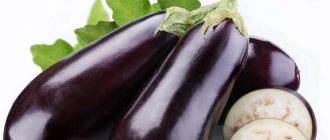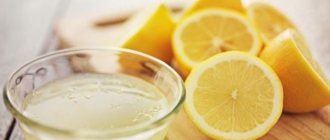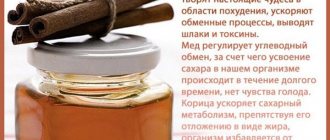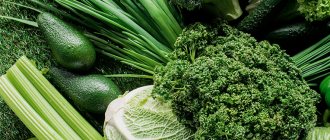At the end of the 20th and beginning of the 21st centuries, diseases of the cardiovascular system acquired the nature of a pandemic, being the main cause of disability and death in the population of economically developed countries. The main role in circulatory disorders in arterial vessels belongs to atherosclerosis.
Atherosclerosis is a chronic disease of the arteries that occurs as a result of lipid metabolism disorders and is accompanied by the deposition of cholesterol and its “bad” fractions in the vessel wall. Deposits form atherosclerotic (cholesterol) plaques on the walls of blood vessels. The subsequent growth of connective tissue in them (sclerosis), and calcification (calcium deposition) of the vessel wall lead to deformation and narrowing of the lumen until complete blockage.
When the arteries supplying the heart are damaged, a phenomenon called angina pectoris (chest pain) occurs and, as a result, acute myocardial infarction may develop.
Damage to the arteries supplying the brain causes either a transient (micro-stroke) or persistent (stroke) disturbance of cerebral circulation. Deposition of cholesterol in the arteries of the extremities is the cause of the development of lameness, pain in the calf during exercise, and gangrene of the extremity. Atherosclerosis of the abdominal arteries leads to intestinal ischemia and gangrene. Possible narrowing of the renal arteries due to the accumulation of cholesterol leads to a pronounced increase in blood pressure.
Risk factors for the development of atherosclerosis
- hypertension (systolic blood pressure >140 mm Hg, diastolic blood pressure >90 mm Hg),
- alcohol abuse,
- smoking (the most dangerous factor),
- sedentary lifestyle,
- unhealthy diet
- hereditary predisposition,
- obesity,
- increased cholesterol in the blood (total cholesterol >5 mmol/l, “bad” cholesterol >3 mmol/l, a-cholesterol >50 mg/dl,
- diabetes,
- emotional overstrain.
Such a high probability of atherosclerosis requires timely provision of therapeutic and preventive assistance, because it is known that a person’s age is determined by the state of his vascular bed. In the popular scientific literature devoted to the problem of atherosclerosis, the expression “ cleansing of blood vessels ” is used. Although not a medical term, “ vascular cleansing ” defines a number of extremely relevant measures for the prevention and treatment of atherosclerosis:
- healthy lifestyle and prevention of atherosclerotic process in blood vessels,
- stabilization of the course of atherosclerosis in the presence of its clinical manifestations through pharmacological agents,
- surgical restoration of vascular patency in cases of severe manifestations of atherosclerosis.
Harmful and good cholesterol in foods
Cholesterol or in other words cholesterol is an organic compound present in the cells of the body. Despite the fact that it is a natural fat, the substance is not soluble in water. Human blood contains lipoproteins, consisting of a complex of substances, including cholesterol and transporter proteins.
Of one hundred percent of the compounds found in the human body, eighty are produced by the gonads, liver, adrenal glands, kidneys and intestines, and only twenty percent come from food.
Cholesterol is an important component of the cell life cycle. It takes part in the production of estrogen, cortisol, testosterone and other steroid hormones. The body needs the compound to maintain the normal functioning of all organ systems and general immunity.
Diet for vascular atherosclerosis
First of all, it is supposed to reduce the consumption of fats (containing cholesterol) to such a level that they account for less than 30% of daily calories. In this case, the proportion of saturated fats should not exceed 10%. It is recommended that cholesterol intake be no more than 300 mg per day.
The next requirement for the diet is calorie restriction. In this case, the total caloric intake should not exceed 2500 calories per day. However, we must not forget about the variety and nutritional value of food. It is known, for example, that a deficiency of protein in food reduces resistance to stress, a lack of fatty acids contained in vegetable oils impairs brain function, etc.
Animal products
The consumption of saturated fat, or more simply cholesterol, can be reduced by reducing the amount of beef, pork and lamb. It is recommended to consume any meat products boiled.
It is necessary to remove the skin from the bird and avoid eating the internal organs of animals.
Fatty fish, such as halibut, contain a completely different type of fat that helps dissolve cholesterol plaques in arteries affected by atherosclerosis. Experts from Duke University believe that even one fish meal a week may be enough to reduce the risk of an unexpected heart attack by 50%. Interestingly, you can take fish oil instead of fish, which contains omega-3 fatty acids and lowers cholesterol.
Also, the diet should satisfy the body's needs for vitamin B6. It is actively involved in the processes of fat metabolism, in the transport and breakdown of cholesterol, and in organic iodine, which increases the synthesis of thyroid hormones. Thus, it stimulates the processing of dangerous cholesterol.
For this purpose, it is recommended to include seafood in the diet:
- seaweed dishes,
- squid,
- scallop,
- mussels, etc.
These are the products that lower cholesterol and “clean” blood vessels .
Products of plant origin
Vegetable oil contains “healthy” polyunsaturated fats. Olive oil is considered the most beneficial among vegetable fats. Try to replace them with other types of fats that contain bad cholesterol. Preference should be given to unrefined, cold-pressed olive oil. Because it contains a record amount of antioxidants that are beneficial for the heart and blood vessels, preventing the development of atherosclerosis. This oil is also involved in cleaning blood vessels from cholesterol.
But you can’t get carried away with vegetable oils either! This is often forgotten in recommendations. The fact is that an excess of polyunsaturated fatty acids can lead to a decrease in good cholesterol, which has an anti-sclerotic effect.
Cholesterol intake can be reduced by reducing the consumption of egg yolks (4 yolks per week) and organ meats:
- brain,
- kidneys,
- liver.
55-60% of daily calories should be provided by complex carbohydrates:
- vegetables,
- whole grain products,
- fresh fruits.
An important point is the inclusion of wholemeal products in the diet. The substances contained in the shells of grain crops bind and remove from the body cholesterol contained in food, as well as salts of heavy metals, nitrates and nitrites, carcinogens. Whole grain bread, wheat bran and oat bran contain coarse fiber. The norm is at least 20 g of fiber per day.
One of the richest sources of omega-3 fatty acids is flaxseed. Canadian cardiologists have found that regular consumption of flaxseed provides reliable protection against the formation of blood clots and cholesterol deposition in the arteries, leading to heart attack and stroke. The risk of heart attack can be reduced by up to 40%. 2 tbsp per day is enough. tablespoons of flaxseed, which can be added to porridge, salads and other dishes. Flaxseed should be stored in the refrigerator.
In fact, all of the above products can be classified as traditional methods of treating vascular atherosclerosis.
Folk recipes
In folk medicine you can find a large number of recipes intended for cleaning “dirty” blood vessels and strengthening their walls. When choosing them, it is necessary to take into account the body’s individual intolerance to certain types of foods.
Among the most popular healing remedies:
- Garlic tincture. Can be prepared with alcohol, vodka or water. Freshly harvested garlic is used to prepare this medicinal product.
- Honey with lemon. Prepared as a tonic drink. Drink it on an empty stomach 2-3 times a day.
- Altai tea. There are several options for herbal drink collection. Its main components are rose hips, plantain and coriander. You can add herbs and other additions to your taste. You can buy herbal tea for brewing at a pharmacy.
Decoctions and infusions to strengthen the walls of the bloodstream are most often prepared with clover, chestnut, pine cones, cloves or flax seeds. All these plants have chemical compounds that can not only cleanse and strengthen blood vessels, but also improve immunity. Drinks cannot be stored for a long time, so they are prepared immediately before consumption.
Thus, cleansing the bloodstream and strengthening the cardiovascular system plays a huge role in human health. You can carry out the cleansing procedure at home, but after consultation with a doctor and under his supervision.
Diet of cardiac patients
It is necessary to limit table salt and include foods rich in potassium salts: baked potatoes, green onions, parsley, apricots, dried apricots, figs, prunes, apricots, bananas. Coffee beans contain a lot of potassium, but instant coffee does not! And also in black tea leaves. Green tea contains several powerful antioxidants that lower cholesterol and help normalize blood pressure. 3 teaspoons of green tea are poured into 0.5 liters of boiling water, steeped for 10 minutes and filtered. This amount is enough for a day.
It is highly recommended to distribute the diet into 5-6 meals. The last meal should be no later than 18-19 hours.
Eating any vegetables and fruits is beneficial. It is advisable to consume from 5 to 7 different types daily. Eggplants occupy a special place; they help eliminate cholesterol and also reduce its content in the blood and in the walls of blood vessels.
Nuts have a similar effect:
- peanut,
- walnuts,
- cashew nuts,
- hazel,
- almond,
- hazelnut.
Research shows that eating 150g of shelled nuts per week reduces the risk of coronary artery disease and heart attack by 33% in some patients. However, you should not get carried away with nuts, since these are very high-calorie foods that contribute to weight gain.
Cabbage is very useful:
- broccoli,
- Brussels sprouts
- white cabbage,
- colored.
They contain antioxidants and other valuable biologically active substances that are beneficial for blood vessels and the heart.
It is recommended to eat 2-4 sweet and sour apples daily. Black currants, shadberry and garlic are useful.
Traditional methods of treating vascular atherosclerosis are mainly associated with the use of healthy products that can be found in any garden and summer cottage.
Sample menu for the week
Nutritionists recommend eating 5 times a day during the diet:
- Breakfast: semolina porridge with water or low-fat milk, tea or compote.
- Afternoon snack: Apple or Orange.
- Lunch: cabbage soup, stew or rice, vegetables, stewed dumplings, or juices.
- Afternoon snack: herbal tea with toast.
- Dinner: mashed potatoes, baked fish or chicken, carrot salad.
- Before going to bed: you can drink a glass of kefir with 1% fat content.
Approximately this menu can be used every day for a week, making small changes.
Diet is combined with exercise. They must be carried out for at least 30 minutes daily.
Non-drug methods for the prevention and treatment of vascular atherosclerosis
- to give up smoking,
- anti-atherosclerotic diet,
- active lifestyle - regular dosed physical activity,
- maintaining psychological and physical comfort,
- weight loss.
The diet is prescribed for 3-4 months, after which tests are monitored. If laboratory data and well-being indicate an improvement, then monitoring of the patient continues, but the diet is not removed. If no effect is obtained (cholesterol levels are even higher than normal), then the diet is tightened. If after another 3 months no effect is observed, then modern medications from the statin group are added.
Strengthening eye capillaries
A red mesh on the eyeball indicates weakness and fragility of the blood vessels of the eyes. Another symptom is a burning sensation in the eyes.
Strengthening eye capillaries with folk remedies
• Green tea. Simply drinking a cup of green tea a day can help your blood vessels regain elasticity.
But the most effective remedy for the eyes is tea lotions. Brew green tea in a glass of water, let it brew and cool, dip cotton pads in it and place them on your eyelids.
Exposure time is 15 minutes, repeat daily until visible results occur.
• Contrast baths. Prepare two bowls of warm (but not hot) and cold water. Immerse your face in one or the other liquid in turn. Eyes must be open. Alternately tense and relax your eye muscles under water for 10 seconds, then change the plate. The procedure should be completed with cold water.
• Rosehip decoction. The benefits of rose hips were mentioned above. If you replace one cup of tea a day with this decoction, you will improve your eye health every day. Plus, it's delicious, especially with honey.
Surgical methods for restoring blood flow (cleaning blood vessels)
Surgical methods of cleaning blood vessels are used for clinically pronounced manifestations of vascular insufficiency. In case of damage to the abdominal aorta and arteries of the lower extremities, the indications are:
- reducing the distance of pain-free walking to less than 200 meters,
- pain in the foot at rest,
- development of trophic ulcers and peripheral gangrene.
Surgical cleaning of blood vessels involves: removal of blood clots from the lumen of the artery, elimination of plaques narrowing or clogging the lumen of the vessel, the so-called endarterectomy. If it is impossible to locally remove obstacles in the lumen of the vessel, a new roundabout blood circulation path is created (bypass surgery).
Currently, surgeons have in their arsenal new, progressive methods of restoring or improving blood circulation in vessels, using X-ray endovascular interventions, during which it is possible to expand the lumen of the vessel (balloon plasty) and install a device to prevent narrowing of the vessel in the plasty area (stenting).
The problem of atherosclerosis cannot be eliminated by using any one method, even the most modern one. Treatment and prevention of atherosclerosis are complex and constant, with mandatory monitoring of their effectiveness.
How to lower blood cholesterol
Based on the results of numerous medical studies, it has been confirmed that the substance can cause harm to health when plaques form on the vascular walls. This process increases the risk of thrombosis, myocardial infarction, stroke and other diseases. It is worth remembering that not only cholesterol is to blame for the development of these diseases, but also a wide range of factors affecting health.
The body produces it as a protective material. It is used to restore blood vessels and cells after damage or wear.
Excessively low levels of the substance in the blood also do not have a positive effect on the body. Therefore, in search of answers to the question of how to lower cholesterol, you should not resort to powerful medications and diets unless there is a direct need and a doctor’s recommendation. Only a qualified medical specialist, after examination and laboratory tests, can prescribe a competent course and the required dose of statins (medicines), which will only bring benefit to the body and not harm.
Controlling cholesterol levels in the blood
Before you start eating foods that lower cholesterol effectively and quickly, you should find out its level in the blood. People over forty years of age, with problems of excess weight and obesity, as well as those who have a predisposition to cardiovascular diseases should be especially careful about the process of level control. The measuring unit of a substance is millimoles per liter or mmol/l.
Introductory part
Recently, the number of young people suffering from heart disease has been increasing. Our way of life, chronic stress, and irregular and often not entirely healthy nutrition predispose us to this.
This has led to the fact that hypertension, atherosclerosis, and other heart diseases are no longer the prerogative of old people. Therefore, from a young age you need to take care of your health.
The pharmacological industry offers many drugs to combat excess fat, but while the disease is still in its infancy, it is better to ask nature for help. And together with chemicals, this helps to get rid of unpleasant symptoms.
There are many ways to do herbal cleansing, but we will look at the most effective ones.
There are the following types of vessel cleansing drinks:
- Teas. The simplest and easiest to brew
- Decoctions. They contain many active ingredients, so the effect will be much higher. But be prepared to set aside time every day for preparation.
- Tinctures. They are made with alcohol and this is the main disadvantage of this method. Pros: ease of preparation, long-term storage, efficiency.
If nothing worries you and the tests are normal (or practically), then you can safely drink teas. They are great as a preventative measure. When blockage of the blood vessels in the head is felt on a physical level (frequent headaches, dizziness, muscle cramps, constant coldness in the extremities, deterioration of vision or hearing) - make decoctions. But when time is short and you have to undergo treatment, then infusions turn out to be a panacea!
What foods contain cholesterol: what not to eat
To continuously monitor the level of a biological compound in the blood, it is necessary to adhere to a dietary diet and avoid products with a high content of this substance. It should be remembered that nutrition can both raise and lower cholesterol levels.
What foods raise cholesterol?
When drawing up a diet, it is necessary to remember that choleterol cannot be completely excluded from the diet, as it is important for vascular health. That is, the “bad” substance (LDL) can cause harm to the body, and the “good” substance (HDL) can minimize the risk of disease.
High levels of LDL contribute to the clogging of blood vessels with cholesterol plaques, forming a blood clot, which leads to a lack of nutrients in the heart. HDL, on the contrary, stimulates blood circulation and does not accumulate on the walls of blood vessels. That is why, when creating a diet, you should choose foods that contain “good” compounds.
High levels of harmful LDL are found in:
- Ready-to-eat food (dry rations).
- Fatty meats.
- Chicken eggs.
- High fat dairy products.
- Certain types of fish.
8-10: Berries
The composition of the berries necessary for blood vessels is quite similar to ordinary fruits, but they have several significant advantages:
- high content of “complex” glucose (therefore they can be included in the diet for diabetes);
- the presence of fatty oils (which can replace animal fats);
- a wide combination of vitamins (there are over 10 of them in rowan).
Kalina
In addition to vitamin C and B vitamins, it contains phytosterols - a class of substances of plant origin that act as mediators on the human body. That is, they provoke various kinds of biochemical processes.
Phytosterols, which are found in viburnum, accelerate the absorption of vitamin E, which is precisely necessary for normal hematopoiesis.
Viburnum also helps remove accumulated toxins from the blood. Moreover, it is better to use it in dried form.
Cranberry
Cranberries contain a huge amount of vitamin C, so it is almost impossible to consume them fresh. But it is an excellent preservative.
And the tincture of cranberries with garlic and lemon helps make blood vessels more elastic - in this case, cholesterol is practically not deposited on them even in old age.
Cranberry slightly helps to slightly dissolve atherosclerotic plaques, accelerating the breakdown of lipids. But you still won’t be able to completely get rid of them.
Rowan
Black rowan is more suitable for cleansing blood vessels. Its key benefits are lowering low-density cholesterol levels and increasing the synthesis of erythrocytes (red blood cells).
Just keep in mind that in excess, rowan can be harmful. Most often this ends in gastritis or stomach ulcers.








